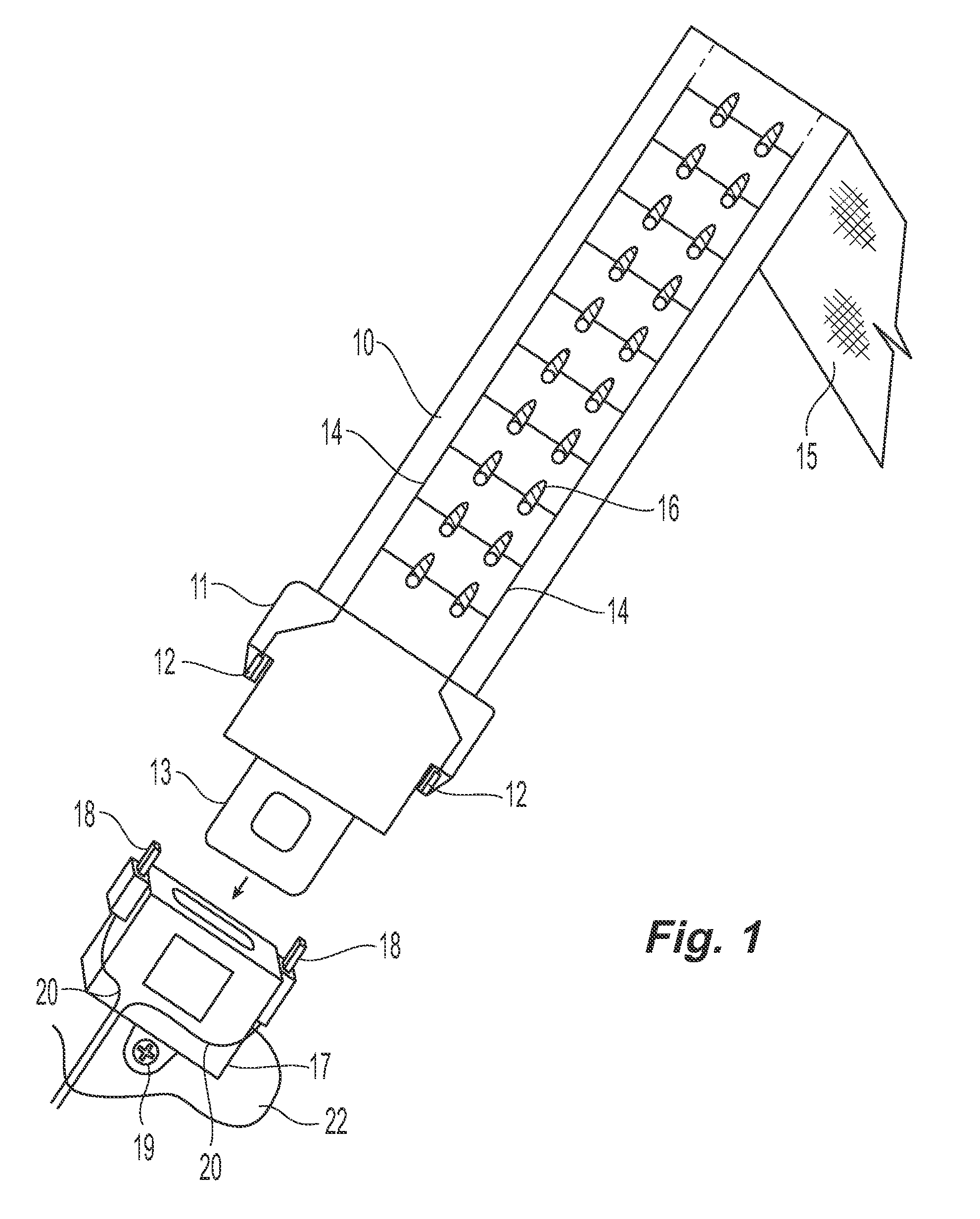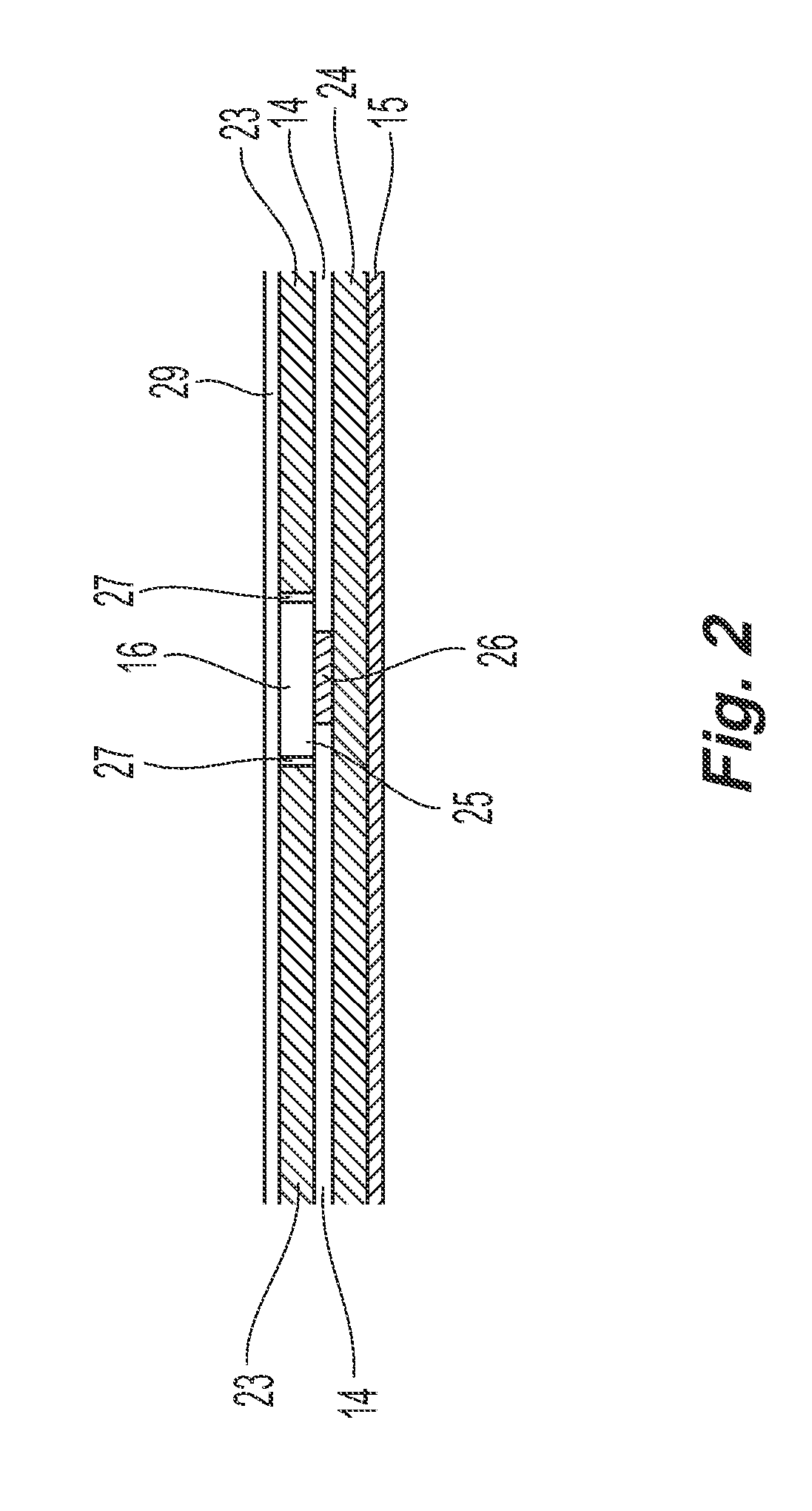Apparatus and method for indicating seatbelt usage
a seat belt and applicator technology, applied in the field of seat belts, can solve the problems of ineffective unaided visual assessment beyond moderate distances, fatiguing and error-prone process, and inability to accrue benefits, etc., and achieve the effect of minimal cost and effort and easy incorporation into the design of new production vehicles
- Summary
- Abstract
- Description
- Claims
- Application Information
AI Technical Summary
Benefits of technology
Problems solved by technology
Method used
Image
Examples
Embodiment Construction
[0022] With reference to FIG. 1, restraining belt webbing 10 comprises a network of flexible embedded conductors 14 which are woven into, laminated, bonded or affixed to the load-bearing webbing material. Webbing 10 terminates in a latch assembly 11 which comprises connectors 12 and latch plate 13. Conductors 14 originate at connectors 12 to provide power to light sources 16. Light sources 16 are disposed across the face of webbing 10, preferably in a repeated pattern such as regularly-spaced rows and columns. Buckle 17 having mating connectors 18 is anchored to the vehicle 22 by a suitable mounting means 19 which will be familiar to the skilled artisan. In the preferred embodiment, connectors 18 and conductors 20 are of an electrically-conductive material, such as copper, and light sources 16 are a miniature light-emitting diode (LED) type. Conductors 20 provide electrical power, which, in the preferred embodiment is supplied from the vehicle's wiring harness, to mating connectors ...
PUM
 Login to View More
Login to View More Abstract
Description
Claims
Application Information
 Login to View More
Login to View More - R&D
- Intellectual Property
- Life Sciences
- Materials
- Tech Scout
- Unparalleled Data Quality
- Higher Quality Content
- 60% Fewer Hallucinations
Browse by: Latest US Patents, China's latest patents, Technical Efficacy Thesaurus, Application Domain, Technology Topic, Popular Technical Reports.
© 2025 PatSnap. All rights reserved.Legal|Privacy policy|Modern Slavery Act Transparency Statement|Sitemap|About US| Contact US: help@patsnap.com



